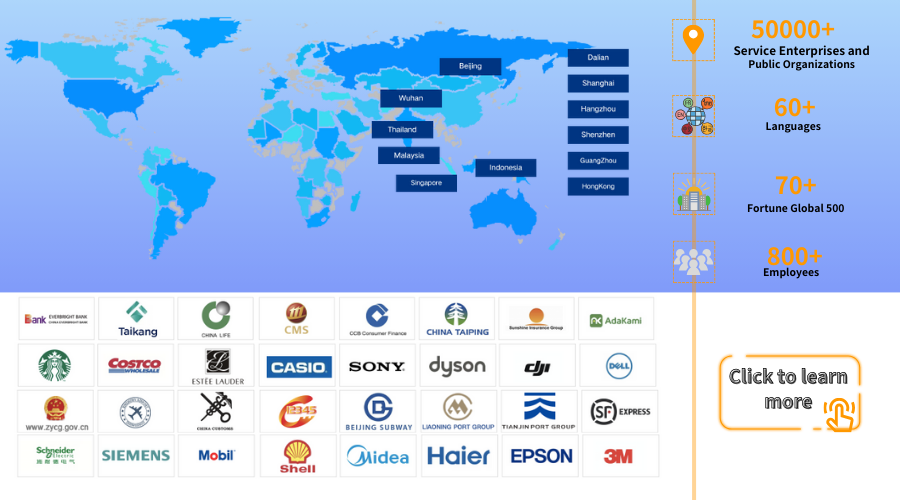First Response Time: The Crucial Moments That Shape Customer Experience
Article Summary:First Response Time(FRT) in customer service, as one of the key metrics for evaluating the quality of customer service, is crucial and cannot be overlooked. This article will delve into the concept of first response time in customer service, provide practical recommendations based on real data, and help you establish an efficient customer service system.
Table of contents for this article
- Definition of First Response Time
- What Can Lead to Slow Response Times
- Practical Suggestions for Optimizing First Response Time
- Shortening the First Response Time Brings About Numerous Benefits
- Shorten the First Response Time with Udesk’s AI Chatbot
- 》》Click to start your free trial of AI chatbot, and experience the advantages firsthand.
In today's fast-paced modern life, customers have increasingly high expectations for service speed. This is especially true in interactions with businesses, where customers expect prompt responses and solutions. First Response Time(FRT) in customer service, as one of the key metrics for evaluating the quality of customer service, is crucial and cannot be overlooked. This article will delve into the concept of first response time in customer service, provide practical recommendations based on real data, and help you establish an efficient customer service system.
Definition of First Response Time

First response time in customer service refers to the time it takes for customer service personnel to respond to a customer's inquiry or complaint through various channels such as phone calls, online chat, or email after the customer reaches out to the company. It includes all aspects of the customer waiting for the service personnel to answer the phone, respond to online chats, or review emails. A shorter first response time indicates that the company is more responsive to customer needs, resulting in a better overall customer experience.
The importance of first response time is self-evident. Customers often lack the patience to wait for extended periods for a response. According to a survey, over 60% of customers stated that if a company fails to respond to their inquiries or complaints within 5 minutes, they would consider switching to another company. Therefore, reducing the first response time in customer service is crucial for improving customer satisfaction and enhancing customer loyalty.
For many e-commerce platforms, 15 seconds is a critical threshold, as consumers start to become impatient after this time frame. Companies can make adjustments based on their individual circumstances.
What Can Lead to Slow Response Times
- Lack of training and skills: The customer service team may lack essential training and skills, leading to inadequate problem-solving abilities for certain issues, thus requiring more time to resolve problems and impacting response speed.
- Unfamiliarity with the products: When encountering issues, the team may need to search for answers on an ad-hoc basis due to a lack of knowledge base within the team, thereby delaying responses.
- Ineffective communication and collaboration: Poor internal communication and collaboration within the customer service team can result in delayed information sharing and low efficiency in collaborative work, leading to extended response times.
Practical Suggestions for Optimizing First Response Time

Incorporating Smart Customer Service Tools
Leverage intelligent customer service systems and automated response features to swiftly address customer needs. The smart tools alleviate pressure on human customer service agents, enhancing response speed.
A key instrument for improving initial response times, AI chatbots enable 24/7 availability with immediate replies to common inquiries, dramatically reducing customer wait times. As a significant portion of customer queries are repetitive, AI Chatbot leverages pre-built knowledge bases and automated responses to promptly resolve such issues, freeing up customer service personnel to focus on more complex problems.
Streamlining Workflow Processes
Review and refine customer service workflows to eliminate unnecessary steps and delays. Implementing rapid response mechanisms and optimizing ticket allocation processes, for instance, can shorten the time taken for the first response.
Strengthening the Customer Service Team
Elevate the professional competence and service mindset of customer service representatives to ensure swift and accurate handling of customer needs. Adequately size and skill-match the customer service team to cater to diverse customer demands.
Establishing Realistic Service Benchmarks
Based on business realities and customer expectations, set achievable standards for initial response times. Regularly assess and evaluate the customer service team’s performance against these standards to guarantee compliance.
Data-Driven Optimization
Gather and analyze customer service data to understand patterns and trends in initial response times. Target areas for improvement to boost overall service efficiency and quality.
Shortening the First Response Time Brings About Numerous Benefits

- Enhanced Customer Satisfaction: Quick responses make customers feel valued, reducing anxiety from waiting and fostering trust and loyalty.
- Increased Efficiency: Rapid preliminary assistance or redirection to specialized teams accelerates the problem-solving process, enhancing overall service effectiveness.
- Optimized Resource Allocation: Automated responses or chatbots filtering simple queries allow human agents to concentrate on more complex cases.
- Reduced Customer Churn: Swift responses minimize the likelihood of customers switching to competitors due to impatience.
- Improved Brand Image: Efficient service responses reflect professionalism and a commitment to customer experience, contributing positively to brand reputation.
- Increased Conversion Opportunities: In sales scenarios, promptly addressing potential clients' queries effectively promotes closures.
Shorten the First Response Time with Udesk’s AI Chatbot
The quality of customer service reflects a company's cultural sophistication, overall image, and comprehensive capabilities, directly impacting its bottom line. Securing valuable customers is not solely dependent on product quality, standards, or pricing; customer service stands as a pivotal aspect in this equation.
Udesk's AI Chatbot technology revolutionizes customer support by drastically reducing first response time. With its 24/7 availability, the chatbot instantly addresses common queries, ensuring customers receive immediate attention. By leveraging machine learning and a comprehensive knowledge base, it handles repetitive tasks efficiently, freeing up human agents to focus on complex issues. This integration not only enhances customer satisfaction but also streamlines your support workflow, making your service more agile and effective.
》》Click to start your free trial of AI chatbot, and experience the advantages firsthand.
The article is original by Udesk, and when reprinted, the source must be indicated:https://www.udeskglobal.com/blog/first-response-time-the-crucial-moments-that-shape-customer-experience.html
AI chatbotCustomer ExperienceFirst Response Time

 Customer Service& Support Blog
Customer Service& Support Blog



